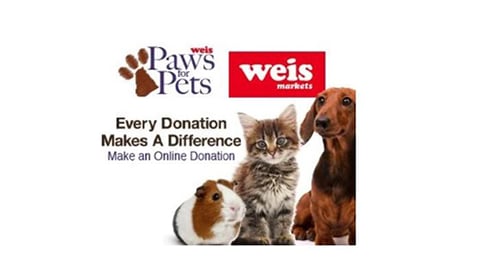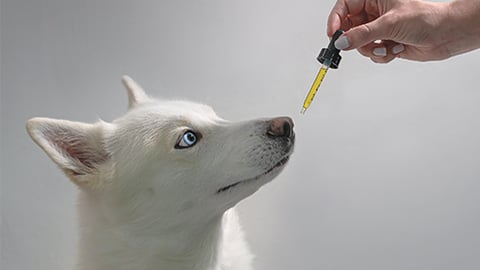Pet Care in a Pandemic
"It’s been big business. Honestly, I’ve gotten more inquiries in the past six months than I did all last year,” says Ruchika Mustafa, the director of Tiny Paws Rescue, an organization that takes in local displaced animals in the Hampton Roads area of Virginia and finds forever homes for them. Mustafa adds that since the COVID-19 pandemic led to mass closures of U.S. businesses in March, she has seen a major uptick in applications to both foster and adopt pets.
Key Takeaways
- In the midst of the coronavirus crisis, pet ownership is up, as consumers with more free time seek furry friends for companionship.
- Pricing of pet care items isn't just important to shoppers worried about their finances in an uncertain economy, but also a key consideration for grocers that wish to create loyal customers.
- Online purchases not only keep pet owners safer, since they don’t have to risk exposure to the virus in a store, but also provide a convenient way to obtain their needed items that looks set to outlive the current situation.
“When you think about it, it makes a lot of sense,” she observes. “Everyone is home and spending 100% of their time with their loved ones, and that includes their pets. A lot of people might not have had time for a pet before, but now they have all of this time on their hands.”
As a small rescue organization, Tiny Paws has sometimes found that meeting the demand for furry friends is difficult. “A couple of times during the past few months, we’ve had to put people on waiting lists,” marvels Mustafa. “There just weren’t enough to go around!”
Pet ownership was already big business before the onslaught of lockdowns, quarantines and self-isolation. According to the American Pet Products Association’s (APPA) second volume of the “COVID-19 Pulse Study: Pet Ownership During the Pandemic,” 6% of survey participants said that the virus caused them to acquire a new pet this summer. That could represent millions of newly acquired pets, all of which need food, medicine and supplies.
Pricing Importance
While COVID-19 may have made pet adoptions trend upwards, it has fewer positive effects on the finances of pet owners. Sixty-one percent of them think that the economy is heading into a recession, and more than half are very concerned about their finances over the next year.
Pet retailers are watching the numbers, too. The Stamford, Connecticut-based APPA reports that more than $95 billion was spent within the U.S. pet industry in 2019, with nearly $37 billion spent in the food and treat categories, and $19 billion on supplies, live animals and over-the-counter medicine, but the COVID-19 pandemic has added a healthy dose of uncertainty to the 2020 projections. There’s some good news for retailers, however: According to Progressive Grocer’s 2020 Consumer Expenditures Report, pet food is up by a couple of percentage points, while treats and supplies both grew significantly through July 2020.
Lisa Tuttle is the owner of Posh Pets, a Dallas pet boutique brand. With more than a decade in business, she’s seen a lot of ups and downs in the pet industry. “If you think about it, right now we have people stuck at home and valuing pet companionships more than ever,” notes Tuttle. “All of these pets are getting more walks, more treats, more love. But on the other hand, everyone is worried about their finances and what the future will bring. That tells me that there’s money on the table, but customers are going to be picky about the pricing.”
Retailers will need to be careful about pricing and margins to bring in those price-conscious consumers while also taking care of their own bottom lines. One way to do that could be offering enticing discounts on bulk-food purchases or grooming products.
Repeat Customers
“The first thing you should remember is that pet owners are repeat customers,” explains Posh Pets’ Tuttle, adding that repeat business is the cornerstone of selling to pet owners.
“No one gets a cat and buys just one bag of litter for the next decade. They’re going to need litter every single month, right? So, if you don’t see them again, it’s because you didn’t meet their expectations in some way, and they’ve taken their business somewhere else.”
In terms of marketing and branding dollars, it’s always more cost-efficient to keep a returning customer than to bring in a new one. Keep repeat customers by not only meeting their needs, but also anticipating their evolving needs. In many cases, retailers should work to fulfil parallel needs to encourage repeat business. Grocers have a lot of choices in this because they sell so many product categories, but the natural add-on product would be in the pet category. Dog food customers can also be sold treats. Cat litter customers may also need toys. The more needs fulfilled, the more likely that customers will keep coming back.
Online retailers encourage repeat business by using features like recurring orders. A customer might order pet food through the website and receive reminders or even automatic deliveries on that product every month. It becomes a no-brainer item on the customer’s to-do list while also being expected income for the retailer. Grocers can implement their own programs by adding this feature to their online and/or delivery offerings.
Convenience During COVID
Consumers are settling in for the long haul with this pandemic. When the APPA asked its survey participants how long they think the COVID-19 crisis will last, one-fifth of them said that they expected it to last a year or longer. Many have drastically changed the way that they shop, which may have long-lasting impacts on consumerism.
“You have Amazon, Chewy and Petco — they’re all online retailers. Those are the ones thriving right now, and for obvious reasons,” points out Mike Franco, a professional merchandiser and retail consultant who has worked with grocery brands big and small, including Food Lion and Farm Fresh.
Social-distancing restrictions vary per location, but the overall message is for consumers to stay at home if they can, and limit their trips for supplies. In that environment, consumers flock to online retailers that provide delivery right to their front doors.
Despite this trend, brick-and-mortar retailers have an opportunity to trade on those needs, too. Many already offer online shopping, as well as delivery or curbside pickup options. They can promote those services to their current customer base by placing marketing collateral where consumers will want to look.
“I once worked with a client that wanted to push their delivery service,” recounts Franco. “We came up with a sticker to put on large items during the checkout process that reminded customers they could get this item delivered next time. As that bag of kitty litter gets lighter and lighter, the information is right there for the customer.”
Retailers could also take advantage of receipt space or place fliers inside grocery bags.
With the future determined by so many variables, it’s easy to get overwhelmed by the possibilities. “It’s hard to think of this whole pandemic as a blessing, but some great things have come out of it,” admits Tiny Paws’ Mustafa. “Whenever I think of all of those pets I’ve placed in the last few months, I can’t help but think that the future might be better than it looks.”












